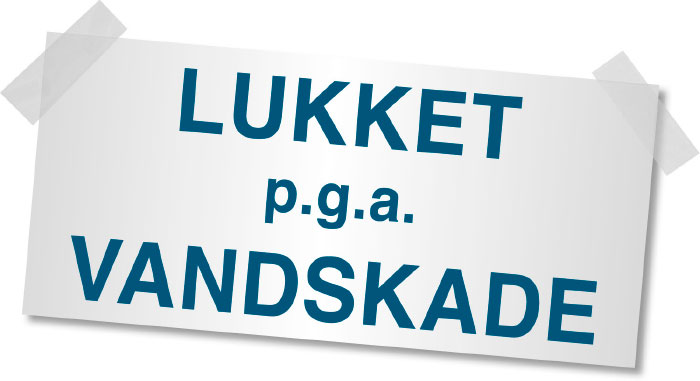Finally – minimum requirements for water protection and leakage systems
Beth Werner
The Danish Technological Institute behind four requirements that should apply every time the systems are installed

Everyone wants to protect themselves against water damage. Of course, because if something goes wrong, the price is often unimaginably high. This is an experience that a number of municipalities across the country have had in recent years, and one they would very much like to do without.
What do you do then? Systems are being looked at to secure municipal buildings against leaks and water damage. A good solution? Yes and no.
Yes, if the water protection and leakage systems work!
– and no, if the systems turn out to be a worthless piece of hardware, basically a toy stuck on the wall.

The latter has for many years been impossible for consumers to protect themselves against, as there has been no minimum requirement for the water protection and leakage systems available on the market. However, the Wild West era is now over.

Four minimum requirements are now on the table
– In an otherwise thoroughly regulated society like the Danish one with all kinds of standards, guidelines and requirements for products, it is surprising that there are no requirements for water protection and leakage systems at all, says Leon Steen Buhl, engineer and senior consultant, Danish Technological Institute and chairman of the Danish Water Damage Committee – and the man behind the preparation of the very first minimum requirements that the institute believes should apply to the water protection and leakage systems available on the market.
Leon Steen Buhl adds that the four requirements are very general and need further work. I see them as a first step towards starting the much-needed dialogue between insurance companies, their trade association Insurance and Pension Fund, users and producers.
In parallel, we can start testing and documenting the impact of different types of systems.
Denmark lags behind other European and Nordic countries
– Incidentally, I am surprised that insurance companies have not been forthcoming with requests and requirements for the water protection and leakage systems that their customers, such as municipalities and other public enterprises, are installing in recent years.
– After all, it is the insurance companies that ultimately bear the biggest financial burden when a building suffers water damage from a water or heating installation. Many companies even offer customers reduced insurance premiums if they install water protection and leakage systems.
 – Of course, minimum requirements should be set for the performance of water protection and leakage systems, says Leon Steen Buhl, Danish Technological Institute.
– Of course, minimum requirements should be set for the performance of water protection and leakage systems, says Leon Steen Buhl, Danish Technological Institute.– But the whole exercise is completely worthless if you think you have secured yourself and then it’s really just a toy on the wall.
– So I look forward to Denmark catching up with Norway and several other European countries when it comes to requirement specifications for water protection and leakage systems. We are really behind in this area,” emphasizes Leon Steen Buhl.
The four minimum requirements from the Danish Technological Institute
- Assurity of the continuous functioning of the system. This can be done by the system testing itself and connected components at regular intervals, as well as issuing an alarm in the event of a fault.
- It is possible to generate a log of events in relation to possible fluctuations in operating conditions and troubleshooting in the system.
- Detailed installation instructions and detailed operating and maintenance instructions, in accordance with the requirements of the Building Regulations, as well as instruction of the user.
- Detailed installation instructions and detailed operating and maintenance instructions, in accordance with the requirements of the Building Regulations, as well as instruction of the user.
Water proofing gone off on its own
Like Leon Steen Buhl, Lars S. Jespersen, an insurance broker at Contea and lecturer in the risk management training for public sector employees, is also looking forward to clear and unambiguous guidelines and requirements for water damage protection systems.
He says:
– It is somewhat paradoxical that the trade organization Forsikring og Pension sets strict requirements when it comes to fire and theft protection, while requirements for water protection are almost a lawless land. Therefore, I am pleased that the Danish Technological Institute has now prepared a number of guidelines that they consider should apply to the installation of water protection and leakage systems.
– We are talking about a lot of public buildings, my immediate assessment is that it is between 30 and 40 percent of the total public building stock in Denmark that has installed water protection and leakage systems.
– And it is with good reason that public authorities want to protect themselves against devastating and costly water damage. The risk is significant because many of the buildings’ piping systems are 30, 40 and 50 years old, making them highly vulnerable to seepage, leaks and even major ruptures.
there has long been a clear need for minimum requirements…
Very dangerous with many false alarms
Through his job as a trainer of public sector employees working in risk management, Lars S. Jespersen has often experienced students’ frustration with the water protection and leakage systems installed in their respective workplaces.
 Lars S. Jespersen, Contea, welcomes the newly drafted minimum requirements. – There has been a clear need for a long time, he stresses
Lars S. Jespersen, Contea, welcomes the newly drafted minimum requirements. – There has been a clear need for a long time, he stresses
– For example, false alarms to such an extent that the employee eventually just ignores them. You can cry wolf a certain number of times, but in the end nobody believes it. And that’s when it gets really dangerous, Lars S. Jespersen emphasizes and adds:
– Of course, users need to be fully confident that the systems they install have been thoroughly tested with a given proven performance and thus work as intended. And this security can only be achieved if systems are subject to requirements.
